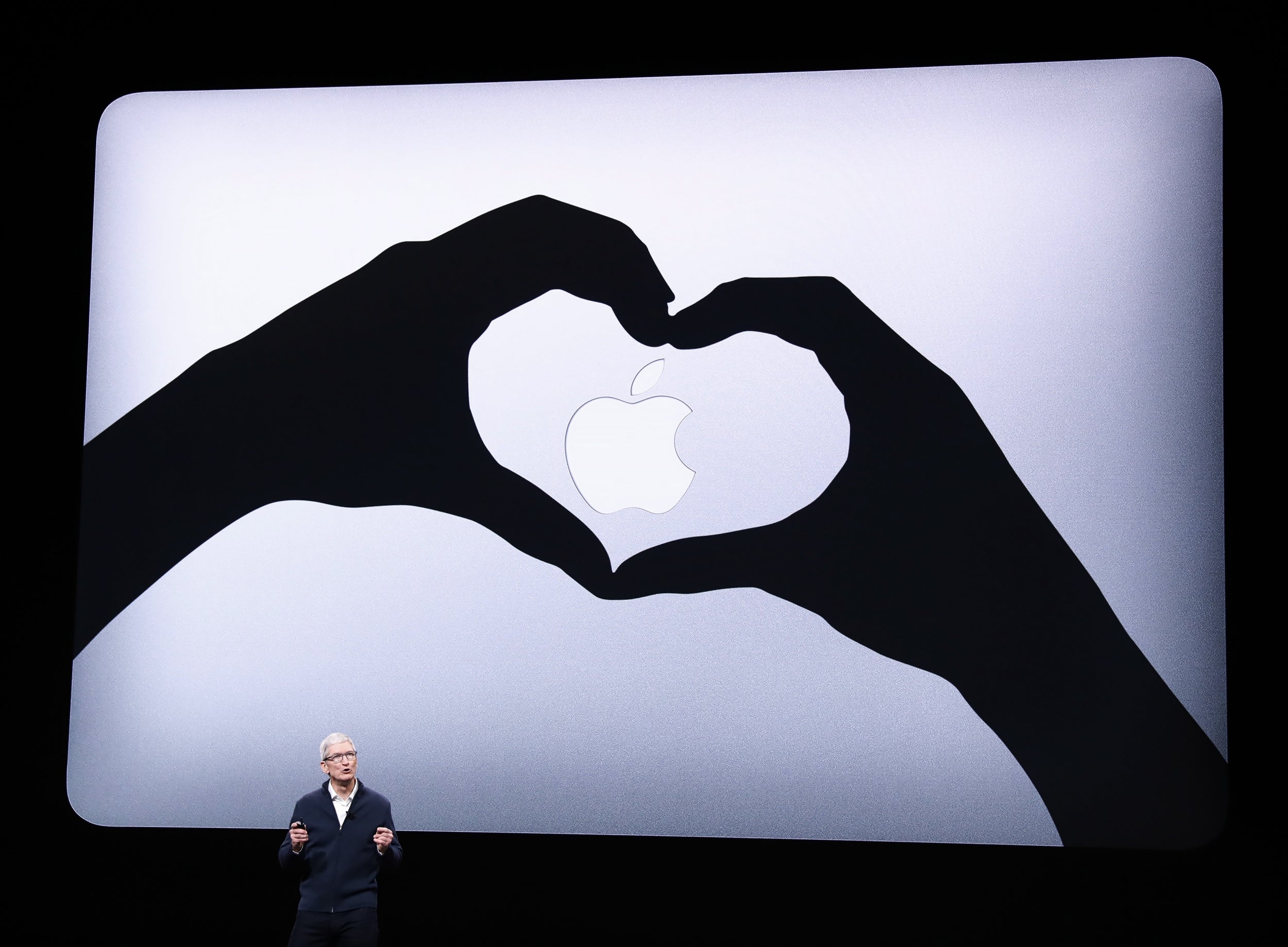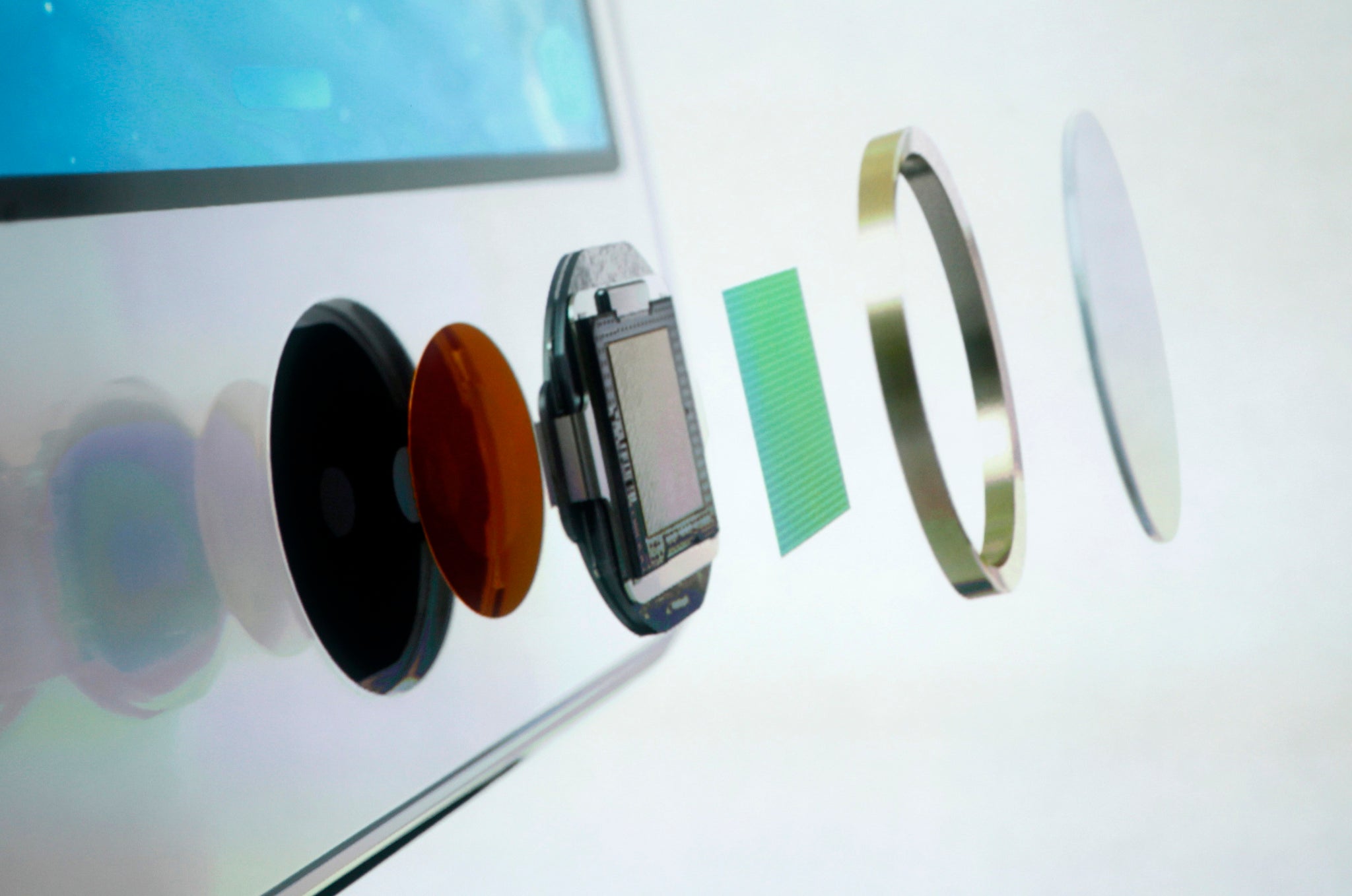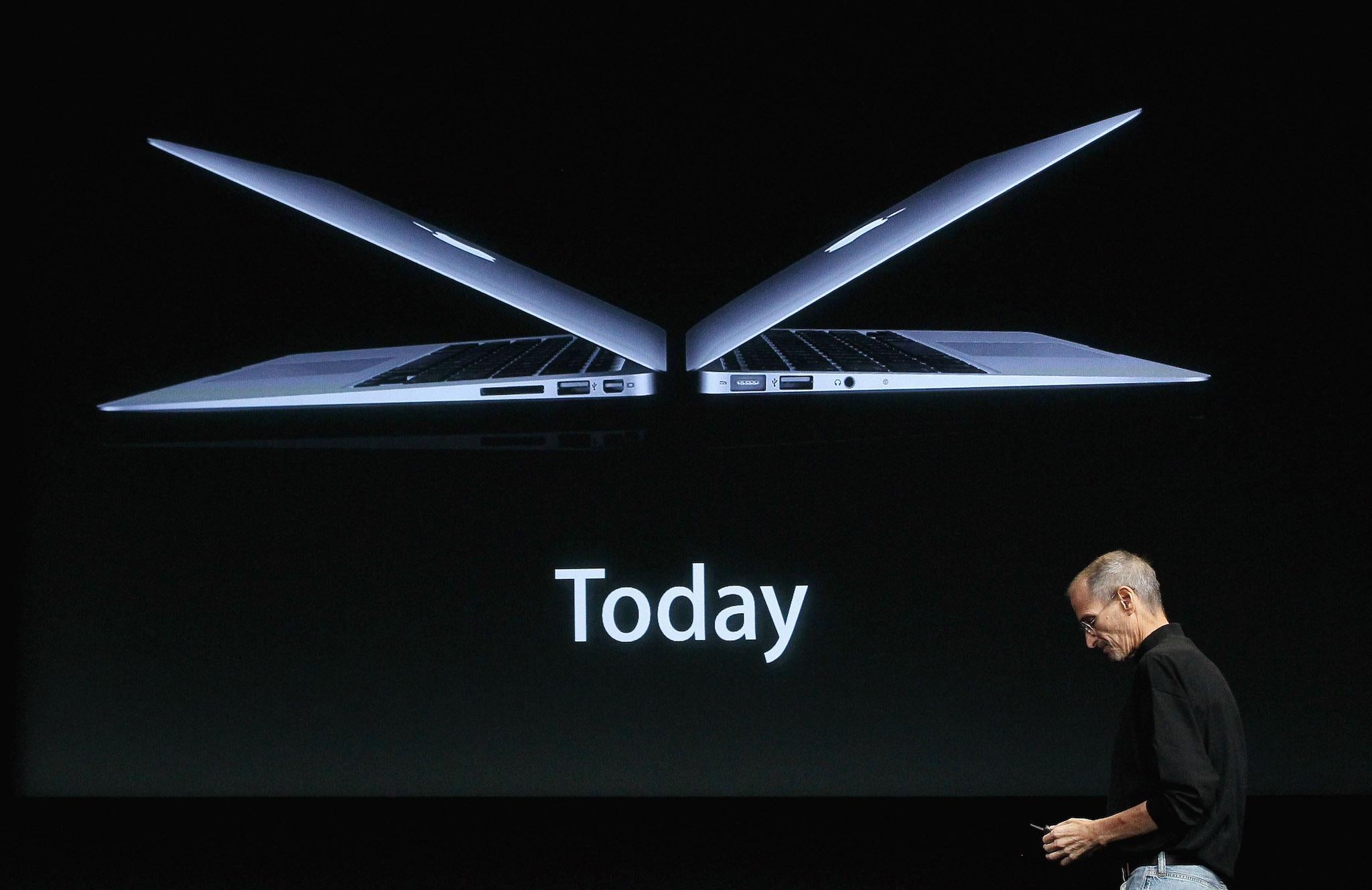Apple MacBook Air Review: Unquestionably the upgrade users have been aching for
The latest Apple laptop is gorgeous and capable – and a fitting update to a successful favourite

The MacBook Air changed how people saw lightweight laptops when it was first announced 10 years ago, revealed when then Apple CEO Steve Jobs slid it out of a manila envelope.
It was very expensive then, but over the years, the original design became the entry-level Apple laptop. It still is – and you can still even buy one with that original design, which has a certain elegance even now. Until you compare it to the new one.
The just-revealed MacBook Air upgrades every single aspect of the original laptop and lands at a price which is still cheaper than the cheapest MacBook, the ultra-portable laptop with a smaller, 12-inch display.
And the new Air is better than the pricier MacBook in almost every way.
Design
You know what the first MacBook Air looked like? That super-slim profile which sloped down to an impossibly thin edge? That's what this laptop looks like when the lid is closed.
It's a little smaller in most directions. It used to be 32.5cm wide, now it's 30.41cm. Before, it was 22.7cm deep, but this has shrunk to 21.24cm and its height (its thickness when closed, in other words) has gone from 1.7cm to 1.56cm at its thickest. Note, though, that the thinnest measurement of all, that uncannily thin lip, has actually crept up from 0.3cm to 0.41cm now. In other words, it's smaller in every direction except at the very edge where it's all of 1.1mm thicker. Big deal.
Oh, and it's dropped from 1.35kg to 1.25kg in weight.
This means it's the lightest Apple laptop apart from the MacBook (0.92kg).
The point is that compared to the previous MacBook Air it's improved, apart from a tiny bit extra on the thinnest measurement, which I defy anyone to notice.
That's before we get to the colour, which was silver only until now. The new model also comes in space grey, as well as a fruity, peachy gold shade to the aluminium that continues to make up the laptop's structure.
The Apple logo is no longer backlit, instead it's a reflective metallic apple, carefully colour-matched to the aluminium frame around it. This brings the MacBook Air into line with the design language of the other latest MacBook and MacBook Pro models.

It looks tremendous, a perfect balance between small body size and big screen, thanks to the tiny bezel that runs round the display. This bezel is nothing compared to the wide silver frame around the display which was required when the first model arrived.
The connectivity has been updated, too. There's no SD card slot, no USB-A ports and no wonderful MagSafe power connector. Only the headphone socket is carried over to the new laptop.
What's new is the same Thunderbolt 3 USB-C connector found on the MacBook, used for data transfer and charging.
Except this laptop has two of them, which is a very big improvement. It's not the super-useful four sockets that are found on the MacBook Pro, but it's a very welcome upgrade.
The other visual difference is the trackpad, which is noticeably larger on this new laptop. And it's a Force Touch pad, that is, it gives the impression of moving when it's only a persuasive haptic feedback that's fooling your finger.
Display
This is one of the most noticeable changes to the laptop, once you've stopped admiring the thin dark bezel and all-glass covering that succeeded the silver aluminium frame.
The 13.3-inch screen is now – finally! – a Retina display. Instead of the 128 pixels per inch (ppi) on previous similarly-sized MacBook Air screens, this has leapt to 227 ppi. To say this makes a difference is an understatement.
Actually, it's more that if you used the MacBook Air, it was fine until you glanced at a recent MacBook or MacBook Pro with their glorious Retina displays, and then you simply didn't want to go back. Now, the MacBook Air has joined the Retina club.
It's unquestionably the upgrade Air users waiting to replace their laptop have been aching for over the last few years.
There are more colours available on this screen – 48 per cent more, Apple says – and in this respect also, the improved display is a big step forward.
Audio
Since the display has been upgraded, you may very well want to watch video on it – after all, it's bigger than the largest iPad screen, and almost as high-resolution. So, you'll be glad of the improved audio. Apple says the new stereo speakers offer twice the bass and an extra 25 per cent of volume compared to the last model. I haven't measured it, you understand, but it absolutely sounds better and definitely loud. There are three microphones on board, which is useful because this laptop supports hands-free Siri, of which more later.
Keyboard
It may look just like the old keyboard but wait until you try it. To be fair, the original MacBook Air keyboard was a sumptuously comfortable user experience which some feel has never been bettered. The new keyboard was clickier and noisier.

This is the third-generation of the new butterfly-mechanism keyboard which is noticeably quieter than the second-gen. And, unlike the previous MacBook Air, this one is now in line with the other Apple laptops, with individually backlit keys.
Performance
Of course, you'd expect the processor to be cutting-edge. It is, and although in everyday use the previous MacBook Air was perfectly fast enough, this is noticeably more capable and speedier, even down to simple things like opening files and launching apps.
When I first saw the second-generation MacBook Air, all those years ago, I was told that battery life was excellent and plugging it in all day long just wasn't necessary.
That's just as true today and in the week or so that I've been testing the laptop, it's lasted more or less a full day with ease. Important in a laptop as portable as this one.
The processor is powerful enough to let you talk to your computer. Say "Hey, Siri" from across the room and it'll respond. Only the most recent MacBook Pro models can match this.
Touch ID
Although it lacks the super-cool Touch Bar of high-end MacBook Pro models, the MacBook Air has stolen another excellent feature: Touch ID. Nestled to the right of the function keys is a tiny, glossy square. Register your fingerprint and you can unlock it with one touch. This is a brilliantly intimate way to open your Mac, quicker and simpler than a password and only beaten for ease by unlocking with the Apple Watch.

You can use Touch ID for Apple Pay, too, when you're paying for stuff online.
Aluminium
It's made of aluminium. Well, that's normally not much of a thing to focus on. But this MacBook Air is the first Apple device to be made from 100 per cent recycled aluminium. The bits left over when other MacBooks, iPhones and iPad are created have been turned into this new laptop thanks to Apple metallurgists working on how to create a new alloy that can be re-used effectively. Note that the colour of the laptop is identical to the colours used in non-recycled Macs – a sign of the success of this alloy. It means the carbon footprint is half that of the last MacBook. Apple uses smelting processes which are less harmful than some manufacturers in the first place, but now, with this laptop, no smelting has been necessary at all, which is a definite bonus for the environment.
Which MacBook should you buy?
That's an interesting question. The new MacBook Air sells for £1,199, that's £50 cheaper than the cheapest MacBook, which has a smaller display, older processor and lacks some of the best features of the new Air such as an extra USB-C socket, Touch ID and hands-free Siri. On the face of it, it's a no-brainer: why spend more for a less advanced machine?
The only reason is portability – the MacBook is small and significantly lighter than the Air. You really feel the difference when you're holding both, though neither is exactly heavyweight.

If you're happy with the weight of the Air (and pick it up in store to see for yourself) then the Air wins out in every other department, from its glorious screen to its extra speed and features.
And if you want the cheapest MacBook of all, the Air with its previous design, is still available, for £949. This older model is likely to remain a keen choice for the budget-conscious for some time to come. Mind you, the new one is way better in every single respect (unless you really need an SD memory card slot, and – you know what? – there are dongles for that).
Verdict
Unless you need something super-light, the MacBook Air is the best choice. Unless you need advanced processing power that only the MacBook Pro can deliver, the MacBook Air is the best choice.
The new model is pricier than the old, but it offers a great balance between power and portability. The new design is cute, especially the new gold finish, and the addition of Touch ID is a genuine advantage.
Most of all, it's a reminder that in the last 10 years, not much has happened to overtake the design ethos of the MacBook Air, apart from a better screen, faster processor, slimmer bezel, better connectivity and improved security in the form of Touch ID. All of which are included here.
The new MacBook Air was a hugely popular laptop. Goodness knows we've been waiting a long time for this upgrade, but it's here, and Apple has delivered the goods.
Join our commenting forum
Join thought-provoking conversations, follow other Independent readers and see their replies
Comments